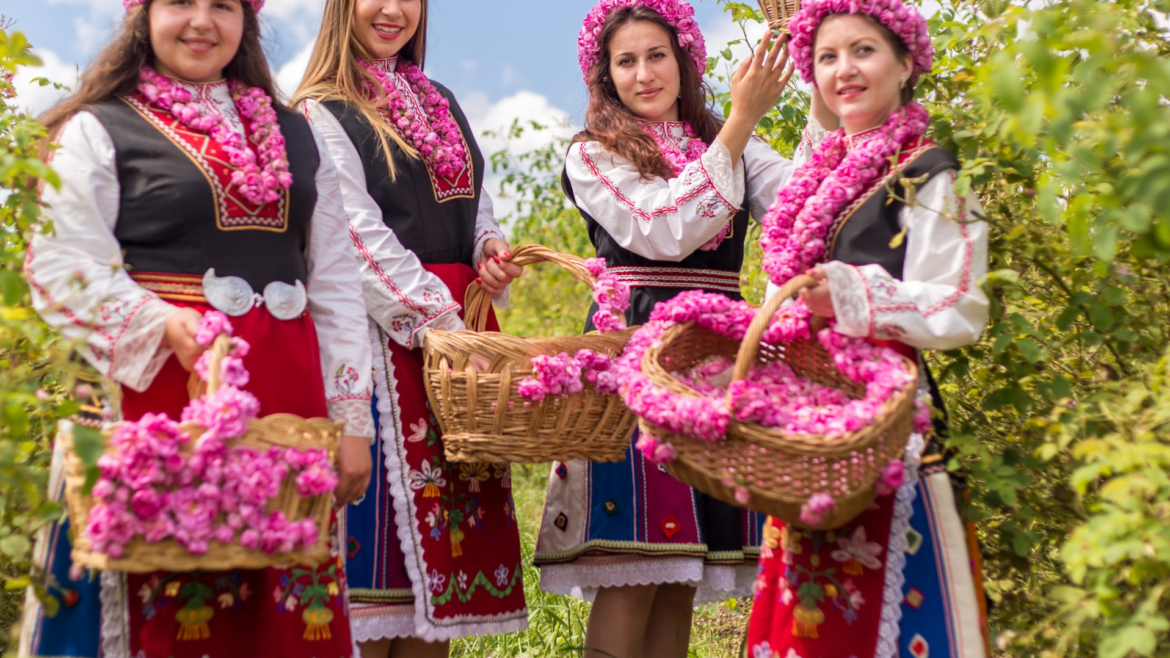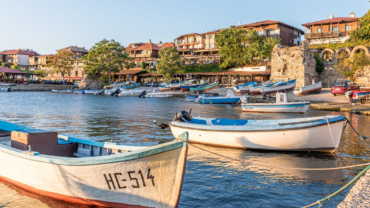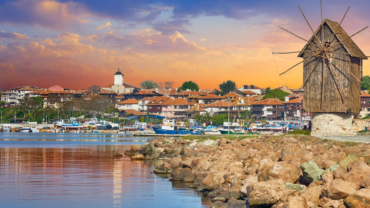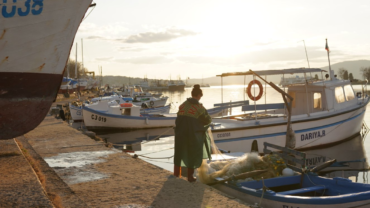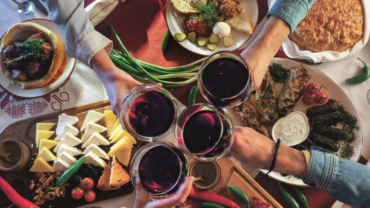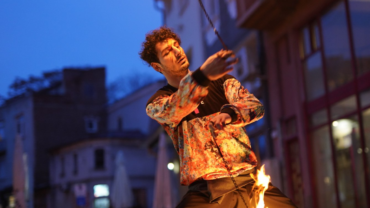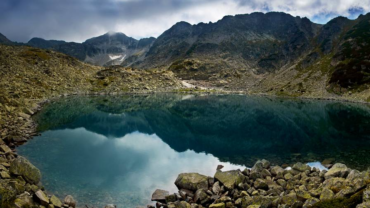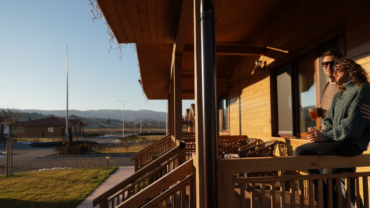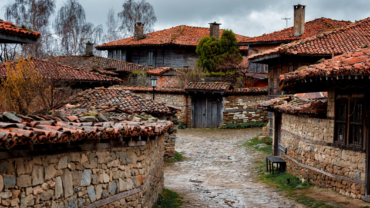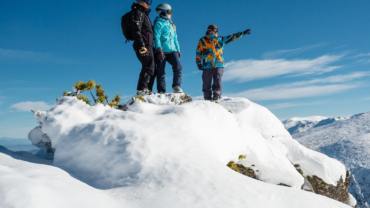Experiences in Bulgaria
EDEN destinations in Bulgaria
EDEN, European Destinations of Excellence, aims to promote sustainable tourism development models across the EU. The initiative is based on national competitions and promotional campaigns that result in the selection and promotion of a tourist ‘destination of excellence’ for each participating country.
Through the selection and promotion of destinations, EDEN effectively achieves the objective of drawing attention to the values, diversity and common features of European tourist destinations. It enhances the visibility of emerging, non-traditional European destinations, creates a platform for sharing good practices across Europe and promotes networking between awarded destinations.
This European quest for excellence in tourism is developed around an annual theme, chosen by the European Commission in conjunction with the national tourism bodies.
Resorts in Bulgaria
There are many resorts in Bulgaria, and they are exceptionally diverse. The following resorts are located along the Black Sea: Rusalka, Albena, Kranevo, Golden Sands, Riviera, Chayka, Sunny Day, St. Konstantin and St. Helena, St. Iliya, Obzor, Sunny Beach, Elenite, Dyuni, Nesebar, Ravda, Kiten, Pomorie, Primorsko, Chernomorets, Sozopol, Lozenets, Tsarevo, Ahtopol and Sinemorets.
The holiday settlement Rusalka began as a member of the French resort corporation Club Med (Club Méditerranée). It is located in the natural park Tauk Liman.
In Albena, tourists can enjoy beaches that are more than five kilometers long and an average water temperature of 24 ˚С during the summer.
The Golden Sands beach is 3.3-kilometers and up to 100 meters wide, with an average water temperature of 24 ˚С during the summer and an average summer air temperature of 27 ˚С.
The holiday club Riviera possesses a wonderful beach and is located in a park with centuries- old trees.
Saints Konstantin and Helena and Sunny Day are resorts distinguished by their mild climate and tranquility.
The largest of the Bulgarian Black Sea resorts is Sunny Beach. It has a beach that is 5.5 kilometers long and an average water temperature during the summer of 26 ˚С. The resort’s average summer air temperature is 28 ˚С. The resort of Saint Vlas is located nearby.
Villas built in the Mediterranean style villas predominate in the resort Elenite, and the resort of Dyuni is located amidst a pine forest overlooking the sea.
Many hotels at the Black Sea resorts work all year long and provide facilities for conventions and congresses. The Black Sea beaches are divided into large (over 100,000 square meters) – those at Durankulak, Albena-Kranevo, Golden Sands, Kamchia-Shkorpilovtsi, Obzor, Sunny Beach, Pomorie, Atanasovo, Alepu, Primorsko south beach; medium-sized (from 50,000 to 100,000 square meters) – those at Krapets, Shabla, St. Konstantin, the Varna city beach, Asparuhovo, Shorpilovtsi-south, Obzor-south, Irakli, Burgas, Kavatsi, Stomoplo, Nestinarka, Ahtopol, among others; and small (from 10,000 to 50,000 square meters) – those located mainly along the southern Black Sea coast.
The Black Sea coast is also famous for its medicinal mud deposits, which are to be found at Pomorie, Varna, Balchik, Shabla, Atanasovsko Lake, and Taukliman. Also famous are the mineral waters at Krapets, Tyulenovo, Rusalka, Kavarna, Balchik, Albena, Golden Sands, St. Konstantin and St. Helena, Varna, Lower Kamchia, Emine, Medovo and Burgas.
The mountain resorts Pamporovo, Borovets and Bansko have gained an international reputation. Pamporovo is located at 1,650 meters above sea level in the Rhodope Mountains. Snow falls on average more than 150 a year, and the runs are from 800 to 3,800 meter long. Borovets is located in the Rila Mountains, at 1,350 meters above sea level. It offers excellent ski runs, and its biathlon course is one of the best in the world. The fastest developing mountain resort in Europe is Bansko. Besides offering world-class skiing, in the city of Bansko there are also more than 140 cultural monuments. Bansko is also the home of an acclaimed school of icon painting. There are also good conditions for skiing at the following resorts: Malyovitsa, Panichishte, Batak, Beklemeto, Ribaritsa, Osogovo, Momchilovtsi, Chepelare, Kom-Berkovitsa, Uzana, Yundola, Belmeken, Bodrost-Kartala, Predel, Semkovo and Aleko.
Bulgaria also has a number of excellent spa, balneological and wellness resorts: Hisar, Velingrad (the spa capital of the Balkan Peninsula), Sandanski, Banya, Kyustendil, Narechen, Pavel Banya, Kostenets, Varshets, Burgaski Mineralni Bani, Momin Prohod, Slivenski Mineralni Bani, Starozagorski Mineralni Bani, Haskovski Mineralni Bani, Sapareva Banya, Teteven, Tryavna, Apriltsi, Kotel, Elena, Govedartsi, and Dryanovo.
Villages in Bulgaria
Bulgarian villages are famous for their beautiful natural settings and their hospitable residents.
Village tourism has been successfully developed in many of them, providing the opportunity to experience Bulgarian lifestyles and culture, enjoy Bulgarian traditions and customs, and taste Bulgarian dishes prepared according to age-old recipes.
Every Bulgarian village can boast of its rich store of interesting stories and legends. Visitors can benefit from the invigorating contact with nature, relaxation, healthy food, while gleaning village lore. Who wouldn’t feel heartened to wake to the warbling of birds; breakfast on banitsa hot from the homeowner’s oven, with a side dish of homemade yogurt; take a horseback ride through the forest; then relax over a steaming cup of herbal tea by the fireplace of a country evening?
Some of the prettiest Bulgarian villages are nestled in the Rhodope Mountains – Gela, Shiroka Laka, Momchilovtsi, Orehovo, Smilyan, Arda, Dolen, Leshten, Kovachevitsa, Pletena, among many others.
There are also many picturesque villages in the Balkan Mountains – Bozhentsi, Ribaritsa, Zheravna, Oreshak, Medven, Skandalo, Elena, Etrapole and Teteven are just a few of them. The village of Arbanasi near Veliko Tarnovo, a retreat for the well-to-do, is both an enchanting place to relax and a perfect starting point for day trips.
Another kind of charm awaits visitors to villages along the Black Sea coast, since they can combine summer fun with visits to such scenic retreats as Durankulak, Krapets, Tyulenovo, Kamen Bryag, Balgarevo, Shkorpilovtsi, Lozenets, Varvara, Sinemorets, and Rezovo on the Turkish border.
To get to know the beauty of the Rila Mountains, visitors can spend quality time in some of its small towns, such as Govedartsi, Beli Iskar, Mala Tsarkva or Dobarsko.
Accommodations are also available in the Strandzha villages of Balgari, Kosti, Brashlyan, Mladezhko, and those who visit Strandzha at the beginning of June can observe the ancient ritual of nestinarstvo – dancing on live coals.
Cities in Bulgaria
The first inhabited areas in what is now Bulgaria were the caves along the lower reaches of the rivers Iskar, Yantra and Rusenski Lom. By the 6th century BC, the most developed settlement network was Thracian. Later, under the impetus of mining, stock-breeding, and agriculture, settlements grew up in the Rhodopes, the Balkan Mountains, the Sofia area, the Vratsa area, and elsewhere.
At the beginning of the 4th century BC, there were about 3,000 settlements on the land that is now Bulgaria. In the 3rd century BC the first stone fortresses were built.
Until the end of the 2nd century BC, settlement development continued to reflect Thracian cultural influence. Sofia (Serdika), Plovdiv (Pulpudeva), Yambol (Kabile), Stara Zagora (Vereya), Kyustendil (Pautaliya), Blagoevgrad, among other places, were all established as Thracian settlements.
In the 8th century BC, the first Greek cities were founded as colonies (apoiki) in Aegean Thrace, and by the 7th century BC most of our Black Sea settlements were already established – Varna (Odesos), Sozopol (Apolonia), Pomorie (Anhialo), Tsarevo (Vasiliko), Nesebar (Mesembria), and others.
In the 2nd century BC, on present-day Bulgarian territory, the first Roman settlements and fortresses were erected along the river valley of the Danube and along the Balkan Mountain passes, as well as at way stations in the Danube Lowlands. Dating from Roman times are the present-day cities Vidin (Bononia), Svishtov (Nove), Ruse (Saksiginta Prista), Silistra (Durostorum), Montana (Montanesium), Lovech (Melta), Pleven (Storgozia), Razgrad (Abritus), Stara Zagora (Augusta Trayana), among others. After the establishment of the Bulgarian state, the number of settlements grew rapidly. During the First Bulgarian Kingdom (681-1018), their number grew to some 20,000, and new settlements appeared in northeastern Bulgaria, such as Pliska, Preslav, and Shumen. During the Second Bulgarian Kingdom (1185-1396), settlements such as Tarnovo, Cherven, Boruy, Krakra, Karvuna, and Kran were established.
At the end of the 17th century, Bulgarian settlements were established near inns and farms, and by the beginning of the 18th century mountain settlements developed as crafts centers, such as those at Kotel, Koprivshtitsa, Elena, Tryavna, Gabrovo, Sliven, and Samokov.
In the vicinity of the settlements established during the times of the Thracians, Greeks, and Romans, and later expanded during the First and the Second Bulgarian Kingdoms, there are still remains of fortresses and settlements.
Nowadays, there are 256 towns and cities in Bulgaria. The largest of these are Sofia, Plovdiv, Varna, Burgas, Ruse, Stara Zagora and Pleven. In the eastern part of the country, there are the Black Sea towns-resorts of Shabla, Kavarna, Balchik, Varna, Byala, Obzor, Nesebar, Pomorie, Burgas, Sozopol, Primorsko, Sveti Vlas, Chernomorets, Tsarevo, Kiten, Aheloy and Ahtopol. The towns and cities with developed mountain tourism are Samokov, Bansko, Dobrinishte, Chepelare, Smolyan, Elena, Troyan, Teteven, among others. There are also many cities and towns that offer vacation possibilities and balneological treatments, such as Bankya, Varshets, Velingrad, Hisarya, Sapareva Banya, Strelcha, Kyustendil, and Devin. Also of interest to tourists are the Danube towns of Vidin, Lom, Kozloduy, Oryahovo, Nikopol, Belene, Svishtov, Ruse, Tutrakan and Silistra.
Many Bulgarian towns have preserved their Revival architecture. These include Kotel, Koprivshtitsa, Kalofer, Sopot, Elena, Tryavna, Bansko, Melnik (the smallest town in Bulgaria), among others. In some of the towns and cities there are also architectural and ethnographic complexes that have been preserved or restored: Plovdiv’s Old Town, Nesebar’s Old Town (a UNESCO cultural heritage site), Gabrovo’s (Etara), the Old Town in Sozopol, the Old Town in Dobrich, Zlatograd’s Areal Complex, Varosha in Lovech, Smolyan’s residential sections Raykovo and Ustovo, Blagoevgrad’s Varosha, Sevlievo’s Ethnographic Complex, Malko Tarnovo, the Samodovska Charshiya in Veliko Tarnova, Pleven’s Revival Complex, Razgrad’s (Varosh), and others. The ancient Bulgarian capitals of Pliska, Veliki Preslav and Veliko Tarnovo are also of great interest for tourists.



